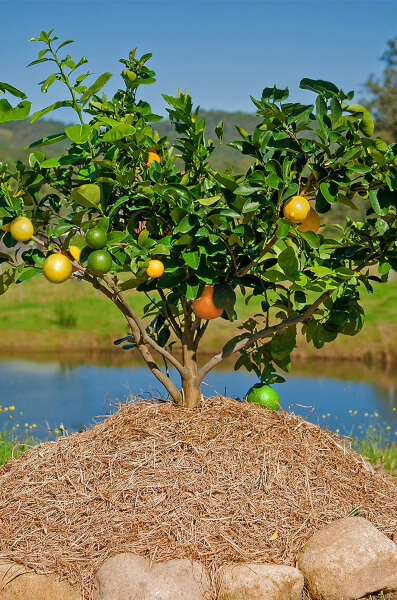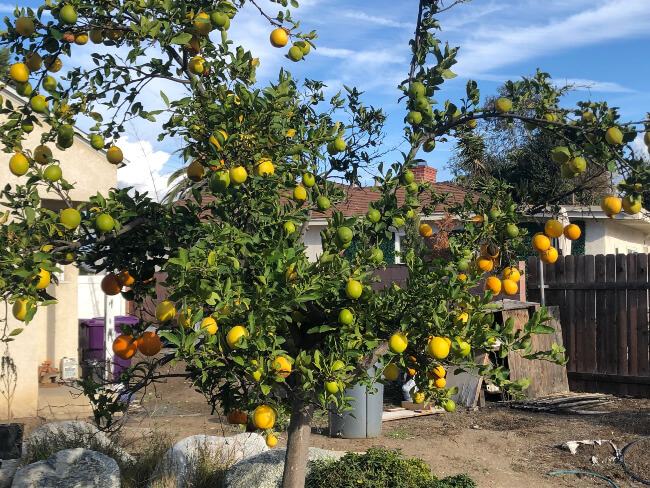In our efforts to use every piece of land available it seems a preposterous notion to plant trees that only produce a single type of fruit these days. Instead, growers and hybridizers have been toying with growing different fruits on the same tree – hence the name: Fruit Salad Tree.
More...
What are Fruit Salad Trees?
If you only have a small space but want to grow a lime tree, a lemon tree and an orange tree, you now have the option to buy a citrus fruit salad tree that may contain all three on the one plant – plus more.
It’s quite possible that you could also have a grapefruit, tangelo and mandarin grafted into the same tree. Or, you could have different varieties of the same fruit – ie, instead of just growing a single mandarin tree, you could have the same tree producing Murcott, Imperials and Fremonts.
A fruit salad tree is only limited by its size and the tribe of fruit that will grow upon it. For example, while it may seem wonderful to have a tree that grows pineapples, grapes, cherries and mangoes on the same trunk it’s just not possible (with the current level of technology) to achieve that.
Rather, having one tree grow stone-fruits, one that grows citrus and another that grows pears, apples and nashees is not only possible but has already been done.
How to Grow a Fruit Salad Tree

Source: Fruit Salad Trees
So, the question that’s on your lips now is, “How do they get them on the same plant?” Quite easily. It’s a propagation method called grafting that has been utilised for centuries.
The gardener starts off with one dominant root stock pruning it to one main leader. Then they graft scions of plant tissue into the trunk which becomes the basis for another type of fruit.
Depending on how many varieties you want growing on the same tree depends largely on the size of your initial rootstock and the number of different scion types you have readily available.
While a fruit salad tree is very possible to create yourself, in most cases the hard work has already been done for you if you buy them ready-made from your local nursery. However, while you may benefit from the convenience and save time by having a tree that’s all ready to fruit you may be limited to the types of hybrids available.
If you want your fruit salad tree to your personal specifications then you will have to create it yourself and have access to the fruit trees that you want to graft into the rootstock.
Trimming a Fruit Salad Tree
The downside – and there’s always a downside – of fruit salad trees is when it comes to pruning. You need to have your wits about you when trimming these plants in the off-season or you might end up cutting off one, or more, of the grafts.
Also, ensuring that the tree is shaped well to handle the weight of different fruits or even their cropping yields is another consideration that can’t be taken lightly.

Source: Reddit


Get Your Free Guide:
Master Growing Australian Natives eBook
A Must Have Complete Guide for Every Australian Garden
Get Your Free Guide:
Master Growing Australian Natives eBook
A Must Have Complete Guide for Every Australian Garden
Benefit of Growing a Fruit Salad Tree
One of the main benefits of a fruit salad tree is the ability to grow fruits that produce at different time periods. You may be able to graft an early fruiting variety with one that delivers at the usual time and another that fruits towards the end of the season.
This ensures that you have fruit for an extended period of time and you won’t end up with a concentrated glut all at once. So, if your yard doesn’t have a fruit tree yet, a fruit salad tree could just be the answer for your garden.
Published on June 5, 2023 by Maisie Blevins
Last Updated on November 21, 2025




